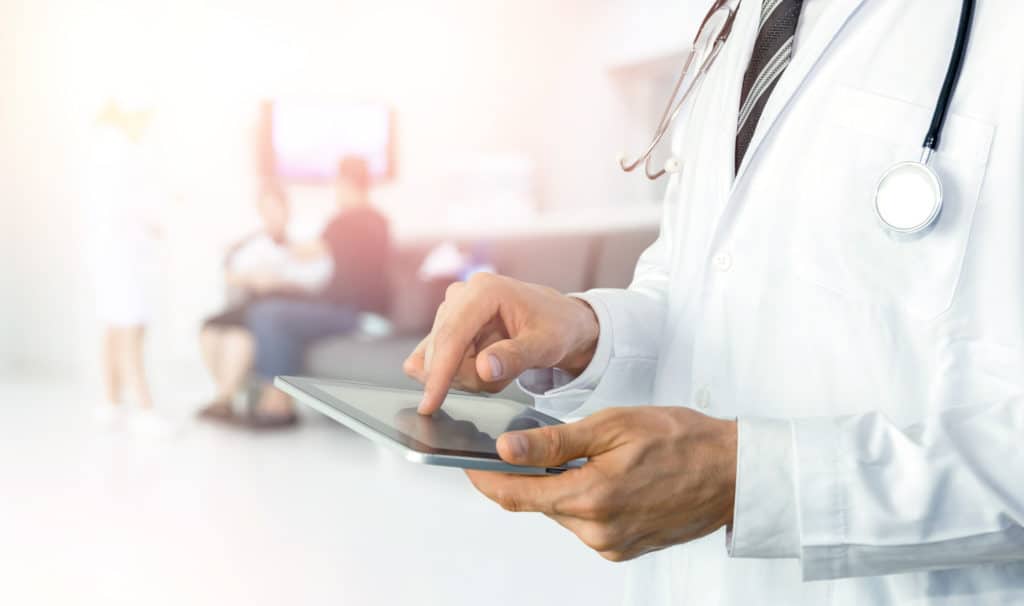The last year has been challenging. Few people have faced a greater challenge than medical professionals.
As quarantines took effect, doctors had to answer a difficult question. How would they see and treat their patients while maintaining safety procedures?
The answer: remote patient monitoring.
Remote patient monitoring allows doctors to gain all the insight they need about a patient’s health without forcing the patient to come into the office. It’s the perfect solution not just for a pandemic but for the future of medicine.
You may be wondering, “What is remote patient monitoring?” Read on to learn more about this exciting innovation in the world of healthcare and how it can benefit both doctors and patients.
Remote Patient Monitoring and Telehealth
One of the first questions you may have about remote patient monitoring is how it relates to telehealth. Telehealth is a large industry dedicated to helping doctors connect with patients over the phone, online, and more.
With that in mind: is remote patient monitoring telehealth? In short, yes. Remote patient monitoring is one specific instance of telehealth. Telehealth is a much broader field that encompasses other services, too.
Remote patient monitoring (or RPM for short) is a way for doctors to monitor patients with chronic conditions such as hypertension or Parkinson’s disease.
Telehealth companies use technology to monitor specific aspects of a patient’s health. They then send that information to a doctor, who can then make recommendations based on that data.
Remote patient monitoring devices can monitor grip strength, blood oxygen levels, and more. Best of all, it can be used anywhere; the patient could be at home, at work, or wherever else they need to be.
The Five-Step Process
Remote patient monitoring companies use a five-step process for their RPM services. This process begins with a doctor and is built to accommodate each patient based on their unique needs.
To start with, a doctor reviews a patient’s healthcare needs. Once they’ve looked things over, they can decide whether or not remote patient monitoring is the right choice for that patient.
If it is, they authorize the service and the RPM company begins step two. BlueStar Telehealth creates a customized monitoring kit tailored to the patient’s needs and ships it right to their door.
Once the kit arrives, telehealth professionals will call the patient and train them on the use of the remote patient monitoring devices. At that point, the third step–data collection–can begin.
Remote patient monitoring jobs involve managing this data and the software that collects and distributes it. Nurses also play an important role, especially in step four: reviewing the collected data and following up with patients.
In the final step, the patient’s doctor is informed of any issues or abnormalities. They can take whatever actions they feel necessary to address those problems.
How Remote Monitoring Affects Patients
RPM is a useful tool for both sides of the doctor/patient relationship. It’s particularly useful for patients, though. There are many benefits to patients, from convenience to a lower chance of hospitalization.
The biggest positive for patients is that they no longer have to make regular trips to the doctor’s office. Scheduling appointments can be difficult, especially if they work long hours or have children.
With RPM, that issue goes away. That makes getting the proper care much easier.
The increased flexibility offered by remote patient monitoring also opens the door for more effective patient education. Doctors can engage more easily with patients, which will allow them to get the patient more information.
The patient will also be in a better position to receive that information, as they won’t be in the stressful environment of the doctor’s office.
Other Benefits
While convenience is the most obvious benefit of RPM, it’s far from the only one. It puts patients in regular contact with their medical team, which makes things easier for both parties.
When a doctor isn’t forced to rush between appointments, they can communicate calmly and effectively with their patient. They can talk a patient through an issue as it’s happening, putting both groups at ease.
There’s also the increased focus mentioned earlier–patients will be better able to process information if they get it right when they need it, in an environment they’re comfortable with.
That goes both ways. Doctors also benefit from being able to dispense medical knowledge from their offices, decreasing stress and burnout.
Choosing Monitoring Software
One of the most important factors when setting up remote patient monitoring is choosing the right software. Software is the cornerstone of RPM–without reliable software, the system falls apart.
The most important aspect of remote patient monitoring software is integration. The system needs to be able to integrate with both the doctor’s systems and the patient’s life.
Remote patient monitoring companies should be able to provide a wide variety of different sensors. This lets them track different aspects of a patient’s health as needed.
The software should also make communication easy. Applications that allow for text and video chat between doctors and patients are a huge benefit for both sides.
Barriers to Remote Patient Monitoring
No system is perfect, and the recent boom in remote patient monitoring has exposed a few potential issues that healthcare workers are working hard to address.
One of the main difficulties associated with RPM is patient engagement. The patient is responsible for using the remote patient monitoring devices. If they don’t, the doctors won’t gain any of the data they need.
Most patients are responsible enough to use their equipment. A proactive doctor can help the ones who aren’t engaging.
Checking in with a patient regularly reminds them to self-monitor. Pointing out improvements and explaining what the data means shows the patient how effective the RPM devices are.
Enjoy the Benefits of Remote Monitoring
Remote patient monitoring is the modern update healthcare needs. It allows medical professionals to navigate difficult situations like the pandemic. It also makes things easier for patients across the board.
Do you have more questions about how to integrate remote patient monitoring into your practice? Visit our frequently asked questions page to get the information you need!




